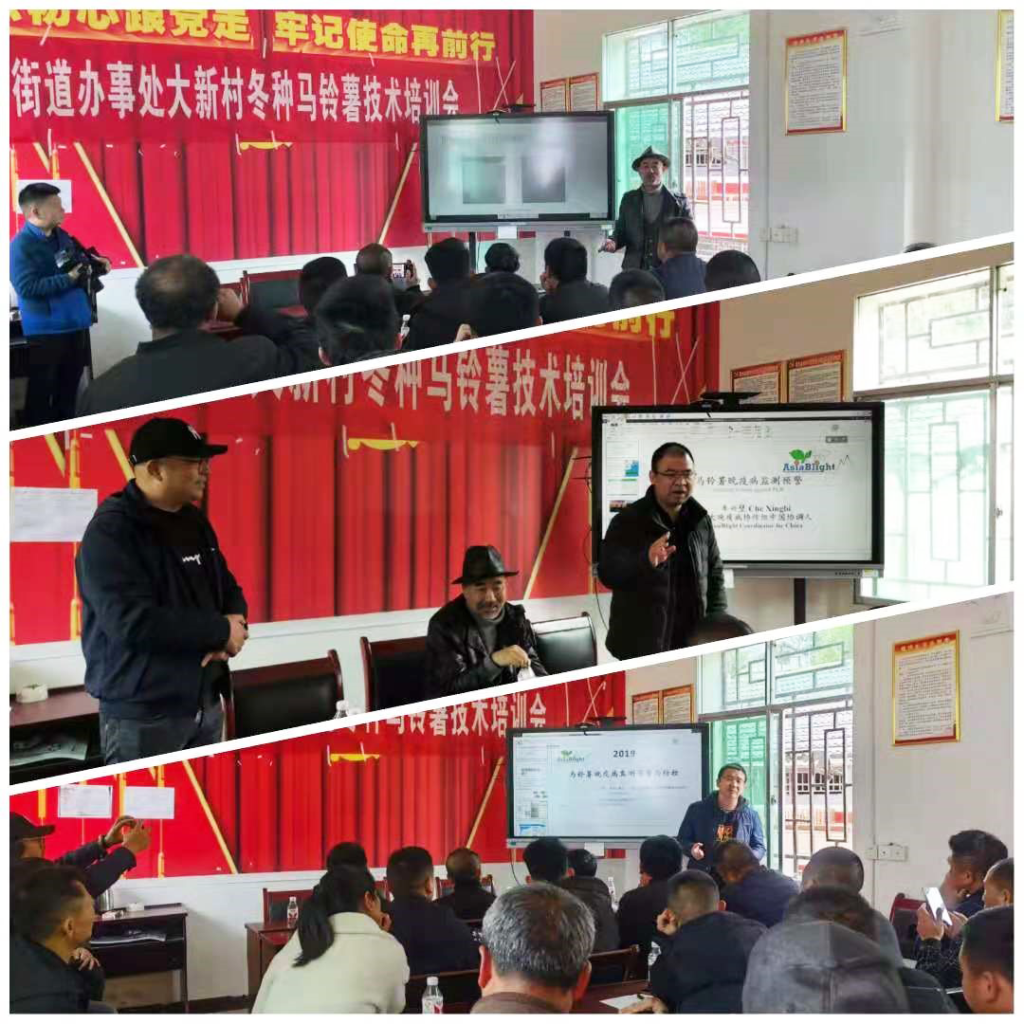In China, the leading obstacle before higher potato yields is late blight disease. When this fungus takes hold in a potato crop, it can claim up to 80% of the total yield, making the harvest unfit for sale and gutting farmer profits.
In response to this disease, the AsiaBlight Network formed a coalition of farmers, scientists, and government officials to develop an integrated approach to managing, and eventually eradicating, late blight disease with an aim to improve nutrition and food security for billions throughout Asia.
Thanks to a massive collaborative research effort, AsiaBlight has developed an evidence-based four-pronged approach to controlling late blight disease:
- Using late blight monitoring and warning systems for accurate prediction and forecasting;
- Monitoring species resistance to determine the first timing of fungicide application;
- Evaluating fungicide effectiveness in the field to guide the selection and use of the types of fungicides for controlling costs and reducing fungicide doses; and
- Monitoring fungicide efficacy to plan the next application period.
However, despite the proven value of this approach, the most important step remains taking these ideas and sharing them with farmers through training and capacity building activities.
Over the course of four months in early 2021, the AsiaBlight Network, led by researchers from the CIP-CCCAP Center in Beijing, visited five Chinese provinces with trainings tailored to address specific needs of farmers in these regions.
| Date | City | Province | Details | Lead CCCAP trainers |
| March | Huishui | Guizhou | New area for potato growing; harvest a round of potato in the winter season. Protecting potato plants, using protective equipment, and how to use early warning detection system |
Xingbi Che Bin Zhang Jun Zhang |
| June | Yulin | Shaanxi | Potato is one of four leading crops in the region. Much annual rainfall makes plant protection paramount. | Xiaoping Lu Xingbi Che Jiping Li* Jun Zhang Tao Jiang Donglei Zhao |
| June | Xining | Qinghai | Well-suited to potato and seed potato production with cool climate and potassium-rich soil. Had early warning system installed in August 2020. Potato has been transformed from a sustenance crop to a marketable commodity. |
Xiaoping Lu Xingbi Che Jiping Li* Jun Zhang |
| June | Dingxi | Gansu | Holds the largest virus-free seed potato breeding base and is important commercial potato production area. Late blight control during times of high rainfall and higher temperatures is key. |
Xiaoping Lu Xingbi Che Jiping Li* Jun Zhang Tao Jiang Donglei Zhao |
| June | Lanzhou, Yongdeng county | Gansu | Two-thousand meters above sea level and good conditions for potato production. Team presented virus-free potato breeding demonstrations for higher quality and yields. Provided demonstrations for various commercial fungicides. |
Xingbi Che Jun Zhang Tao Jiang Donglei Zhao |
*Affiliated with Gansu Academy of Agricultural Science
With these trainings completed, the AsiaBlight Network will continue routine informational meetings with the farmers in these location to understand the how the trainings are impacting potato growth and the sustainability of future yields.

